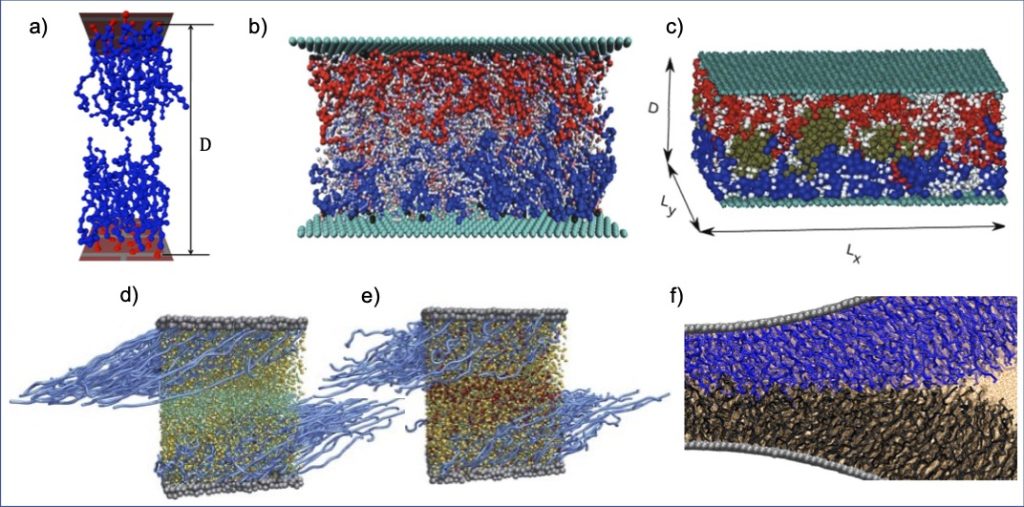Polymer brushes for friction control: Contributions of molecular simulations

Polymer brushes, which are composed of polymer chains attached at high densities from their ends to a surface, are prevalent in nature (e.g., synovial joints) and have attracted considerable attention due to their ability to modify the surface properties by imparting lubricity, bio-passivity, or stimuli-responsiveness. The frictional response can be modulated by adjusting the design parameters of synthetic brushes and the solvent in which they are immersed, although the mechanisms governing this phenomenon are still not very well understood. In order to gain insight into the dynamics of such soft matter systems, coarse-grained non-equilibrium molecular dynamics simulations have been used extensively. In this review article, we highlight the advantages and disadvantages of the coarse-grained models that have been used to simulate polymer brushes under shear. We discuss what, has been, and, can be, learned by using such models in PB friction simulations, as well as how they compare to theoretical descriptions and experimental results, highlighting the discrepancies, recognizing the limitations of simulations in recreating the experimental conditions, and how this gap can be bridged.
Authors: Mohamed A Abdelbar, James P Ewen, Daniele Dini, Stefano Angioletti-Uberti
